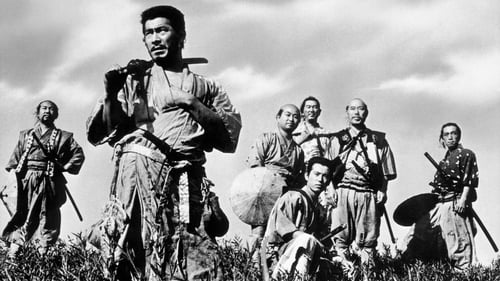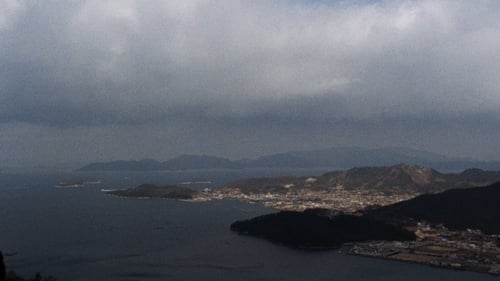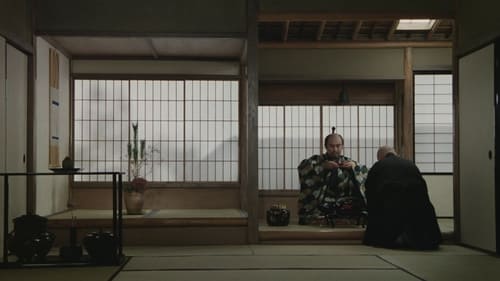Donald Richie
Nacimiento : 1924-04-17, Lima, Ohio, USA
Muerte : 2013-02-19
Historia
Donald Richie was an American-born author who wrote about the Japanese people, the culture of Japan, and especially Japanese cinema. Although he considered himself primarily a film historian, Richie also directed a number of experimental films. (Wikipedia)

Self
A 2007 documentary examining the collaboration between Teshigahara and novelist Kobo Abe, featuring interviews with film scholars Donald Richie and Tadao Sato, film programmer Richard Peña, set designer Arata Isozaki, producer Noriko Nomura, and screenwriter John Nathan

Himself
Using rare archival footage and interviews with noted artists, philosophers, and scholars such as Huston Smith, this film examines the life and teachings of D.T. Suzuki, the celebrated Japanese religious philosopher who first brought Zen Buddhism to the West. This film explores Suzuki's travels in America, his teachings on satori (enlightenment) and other Buddhist concepts, his influence on Western art and psychology, and more.

Self
Seven Samurai: Origins and Influences, a documentary looking at the samurai traditions and films that helped shape Kurosawa's masterpiece

Himself
A documentary on sixties counterculture in Japan featuring Donald Richie, Tadanori Yokoo, Masao Adachi, Koji Wakamatsu, Toshio Matsumoto and Akaji Maro among others.

Self
Un completo repaso y análisis de las vidas y las películas de Akira Kurosawa, uno de los directores más importantes de la historia del cine, autor de obras maestras como “Los 7 Samuráis”, “Yojimbo”, “Rashomon”, “Ran”... Este documental cuenta con la narración de Sam Shepard e incluye fragmentos de sus films, declaraciones de colaboradores, familiares y admiradores de su trabajo, como Clint Eastwood y James Coburn. Y además, incluye fragmentos de la autobiografía de Kurosawa, leídos por Paul Scofeld. Un emocionante tributo a una figura legendaria de la Historia del Cine...

Book
In 1971, author and film scholar Donald Richie published a poetic travelogue about his explorations of the islands of Japan’s Inland Sea, recording his search for traces of a traditional way of life as well as his own journey of self-discovery. Twenty years later, filmmaker Lucille Carra undertook a parallel trip inspired by Richie’s by-then-classic book, capturing images of hushed beauty and meeting people who still carried on the fading customs that Richie had observed. Interspersed with surprising detours—a visit to a Frank Sinatra–loving monk, a leper colony, an ersatz temple of plywood and plaster—and woven together by Richie’s narration as well as a score by celebrated composer Toru Takemitsu, The Inland Sea is an eye-opening voyage and a profound meditation on what it means to be a foreigner.

Narrator
In 1971, author and film scholar Donald Richie published a poetic travelogue about his explorations of the islands of Japan’s Inland Sea, recording his search for traces of a traditional way of life as well as his own journey of self-discovery. Twenty years later, filmmaker Lucille Carra undertook a parallel trip inspired by Richie’s by-then-classic book, capturing images of hushed beauty and meeting people who still carried on the fading customs that Richie had observed. Interspersed with surprising detours—a visit to a Frank Sinatra–loving monk, a leper colony, an ersatz temple of plywood and plaster—and woven together by Richie’s narration as well as a score by celebrated composer Toru Takemitsu, The Inland Sea is an eye-opening voyage and a profound meditation on what it means to be a foreigner.

Writer
In 1971, author and film scholar Donald Richie published a poetic travelogue about his explorations of the islands of Japan’s Inland Sea, recording his search for traces of a traditional way of life as well as his own journey of self-discovery. Twenty years later, filmmaker Lucille Carra undertook a parallel trip inspired by Richie’s by-then-classic book, capturing images of hushed beauty and meeting people who still carried on the fading customs that Richie had observed. Interspersed with surprising detours—a visit to a Frank Sinatra–loving monk, a leper colony, an ersatz temple of plywood and plaster—and woven together by Richie’s narration as well as a score by celebrated composer Toru Takemitsu, The Inland Sea is an eye-opening voyage and a profound meditation on what it means to be a foreigner.

Priest
En el siglo XVI, todas las artes florecían en Japón, como también las guerras y las intrigas por el poder entre los distintos señores feudales. Rikyu, un sereno y prudente maestro del té, tratará de templar la mayor ambición de su poderoso señor: crear un gran imperio japonés en el Pacífico, unificando Japón e invadiendo China. El uso de las invitaciones oficiales para las ceremonias del té le servirán a Rikyu para llevar a cabo sus delicadas negociaciones diplomáticas.

Self
Documental realizado por Kazuo Inoue acerca de la vida y carrera de Yasujirô Ozu, en el cual participa su asistente Shohei Imamura (director de The Pornographers y The Eel), los críticos Donald Richie y Tadao Sato, y los actores estrellas de sus películas Chishu Ryu, Mariko Okada y Haruko Sugimura, entre otros. Un infaltable para los fanáticos de la belleza del cine de este gran maestro.

documentary about Nagisa Oshima
It includes interviews with Oshima, Donald Richie, Roger Pulvers and Paul Mayersberg

Director
A documentary of an avant-garde theatre performance, presents an orgiastic rite of sex, degradation, and bloody sacrifice, performed by Zero-Jigen.

Editor
Donald Richie’s classic is, in the words of Yukio Mishima, an outrageous farce, and a pitiless indictment of all our false ‘human’ values. As an allegory of an ‘all-consuming’ Tokyo family cannibalizing each other in a Tokyo park, it attains the highest reaches of black humour.

Music
Donald Richie’s classic is, in the words of Yukio Mishima, an outrageous farce, and a pitiless indictment of all our false ‘human’ values. As an allegory of an ‘all-consuming’ Tokyo family cannibalizing each other in a Tokyo park, it attains the highest reaches of black humour.

Writer
Donald Richie’s classic is, in the words of Yukio Mishima, an outrageous farce, and a pitiless indictment of all our false ‘human’ values. As an allegory of an ‘all-consuming’ Tokyo family cannibalizing each other in a Tokyo park, it attains the highest reaches of black humour.

Director
Donald Richie’s classic is, in the words of Yukio Mishima, an outrageous farce, and a pitiless indictment of all our false ‘human’ values. As an allegory of an ‘all-consuming’ Tokyo family cannibalizing each other in a Tokyo park, it attains the highest reaches of black humour.

Director
The homoerotic poetry of Mutsuo Takahashi sets the stage for these associated images based on male desire.

Experimental short film depicting the life, perhaps real, perhaps a dream, of a young girl named Emi. Emi travels to the city where she encounters her counterpart, Sari, and falls in love with…a vampire?

Director
A cat's inquisitive look interferes with the pleasurable sensations of a boy while masturbating.

Director
Short film for the "A Commercial for Myself" programme.

Director
Love affair between an older European woman and a younger Japanese man.

Writer
A group of boys playing near the seashore in Tokyo find a goat, kill it in a tug of war for ownership, bury it with ceremony, and, except for one boy, run off in heedless laughter ready for more games.

Editor
A group of boys playing near the seashore in Tokyo find a goat, kill it in a tug of war for ownership, bury it with ceremony, and, except for one boy, run off in heedless laughter ready for more games.

Music
A group of boys playing near the seashore in Tokyo find a goat, kill it in a tug of war for ownership, bury it with ceremony, and, except for one boy, run off in heedless laughter ready for more games.

Director
A young woman arrives at a resort and is soon pursued by a young man. Initially, he appears to be infatuated with her, but it becomes clear he simply wants to seduce her.

Director
A group of boys playing near the seashore in Tokyo find a goat, kill it in a tug of war for ownership, bury it with ceremony, and, except for one boy, run off in heedless laughter ready for more games.

Eight filmmakers collaborate with Teshigahara to create a "frantic, non-stop pop newsreel". Mixing cutout animation with color and black & white photography, this snapshot documents Tokyo in 1957-58, when it had eight and ½ million people and was the largest city in the world. Pollution, bridal fashion, rites, rituals, partying-- Nearly every angle of Tokyo life is compacted into a mere 24 minutes.






